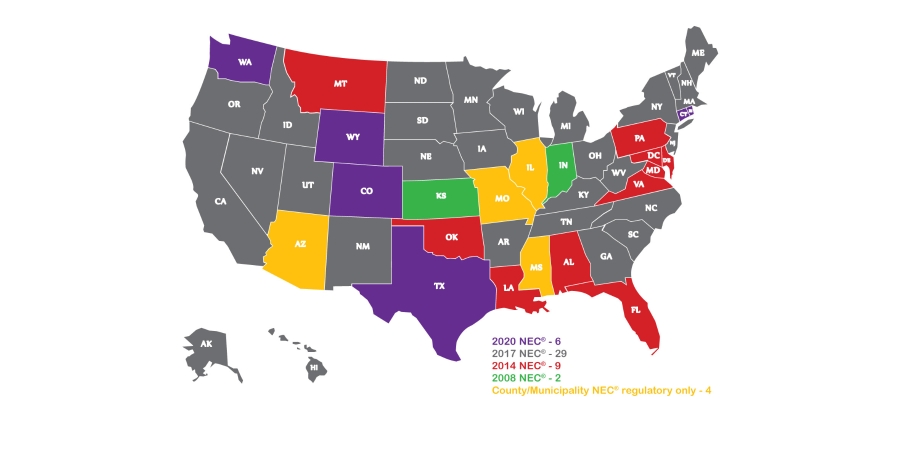“Doesn’t the new edition apply everywhere?”
The National Electrical Code® (NEC®) is an essential document for anyone who specifies, installs, or inspects electrical equipment, but the adoption of its new editions can be uneven from region to region. This article summarizes how the NEC is developed and then adopted across the USA and in other countries.
NEC Development and Publication
The National Fire Protection Association (NFPA®) issued the 2020 Edition of the NEC late in 2019. A document with a long history, the newest version supersedes the 54 prior versions that have been issued since 1897. The document provides effective guidance for reducing risks of electrical hazards to people and property from electrical equipment and systems. Nonetheless, it is revised every three years to address emerging technologies and issues. To better understand why, consider the 2003-2018 electrical safety statistics for US workplaces, as summarized by Electrical Safety Foundation International.
There are many stakeholders to this document. Engineers, electricians, equipment manufacturers, code officials, policymakers, and end-users each have important interests. To ensure each is fairly represented, the NFPA follows an open process developed by the American National Standards Institute (ANSI) to bring forth new editions. Key elements of the process include (1) participation by experts that represent the range of stakeholder interests, (2) public participation and comment, and (3) subsequent revision and publication. In practice, this is a large effort … the 2020 NEC resulted from 18 separate code-making panels, 3,730 public inputs, and 1,930 comments on the initial draft. Available by subscription and other means, free access to several editions of the document can be found on the NEC website.
The National Electrical Code® (NEC®) is an essential document for anyone who specifies, installs, or inspects electrical equipment, but the adoption of its new editions can be uneven from region to region. This article summarizes how the NEC is developed and then adopted across the USA and in other countries.
NEC Development and Publication
The National Fire Protection Association (NFPA®) issued the 2020 Edition of the NEC late in 2019. A document with a long history, the newest version supersedes the 54 prior versions that have been issued since 1897. The document provides effective guidance for reducing risks of electrical hazards to people and property from electrical equipment and systems. Nonetheless, it is revised every three years to address emerging technologies and issues. To better understand why, consider the 2003-2018 electrical safety statistics for US workplaces, as summarized by Electrical Safety Foundation International.
There are many stakeholders to this document. Engineers, electricians, equipment manufacturers, code officials, policymakers, and end-users each have important interests. To ensure each is fairly represented, the NFPA follows an open process developed by the American National Standards Institute (ANSI) to bring forth new editions. Key elements of the process include (1) participation by experts that represent the range of stakeholder interests, (2) public participation and comment, and (3) subsequent revision and publication. In practice, this is a large effort … the 2020 NEC resulted from 18 separate code-making panels, 3,730 public inputs, and 1,930 comments on the initial draft. Available by subscription and other means, free access to several editions of the document can be found on the NEC website.




